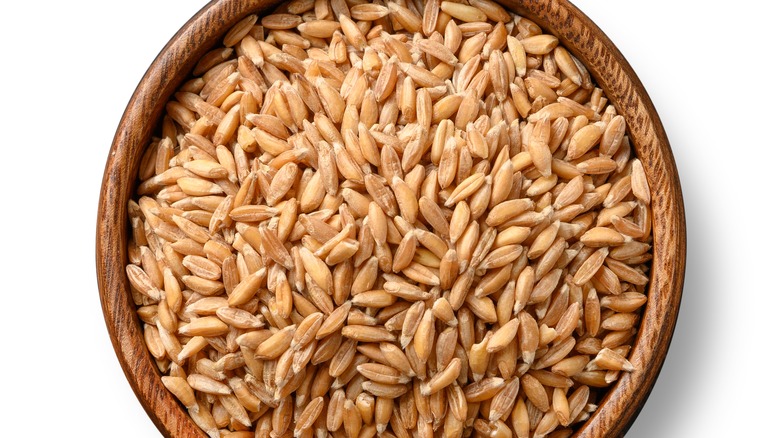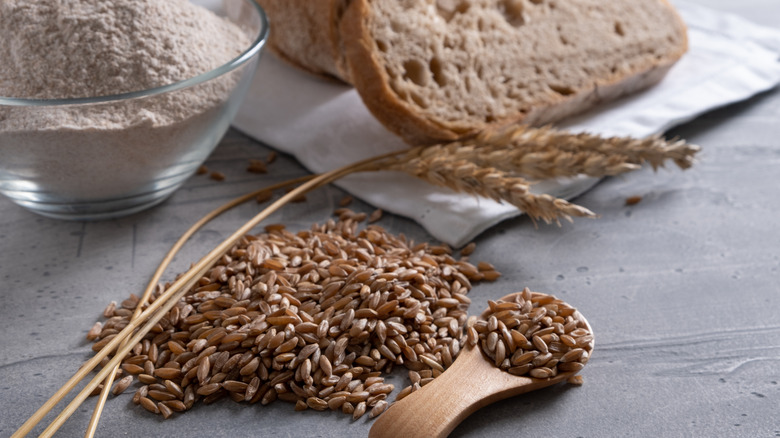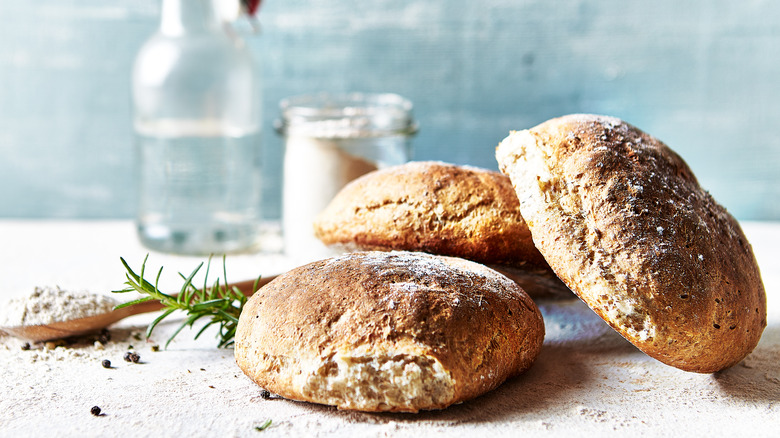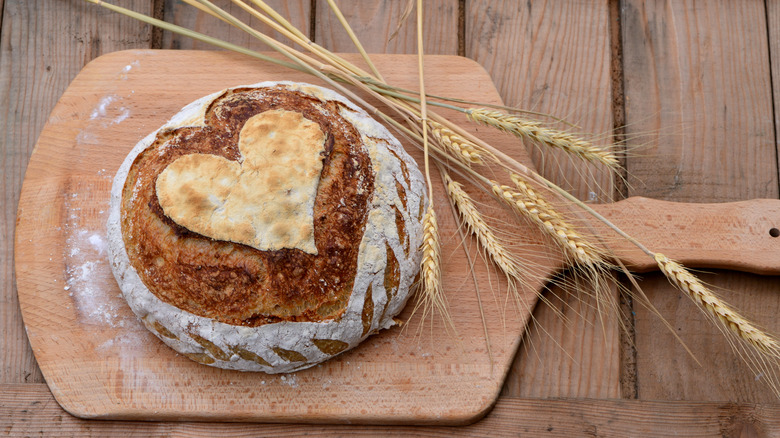What Is Spelt Flour And Can You Easily Replace All-Purpose Flour With It?
While it's not nutrient-dense, all-purpose flour is ideal for recipes where you need to use a flour that doesn't have a strong aftertaste, such as the nutty flavor of buckwheat or whole wheat that can come through in some dishes.
All-purpose flour is great to use when you want something that is easily worked into a variety of recipes, since it can often be replaced one-to-one with other flours, like whole wheat. When it comes to finding substitutes for all-purpose flour, it can be tricky to find ones that yield light, airy baked goods, while also replicating the mild flavor associated with all-purpose flour.
However, there is a grain that can produce similar results to all-purpose flour, and it's fairly easy to find in grocery stores. Spelt is known as an ancient grain and is a member of the farro family, which includes the grains einkhorn and emmer, both of which can be made into flours.
Spelt can also be ground into flour that's commonly used in baking. Although it's a grain that's readily available and has been used for centuries, there are a few things to keep in mind when baking with it, especially if you plan on replacing some of the all-purpose flour in your recipes with it.
What is spelt flour and how is it made?
Spelt is a species of wheat, known as Triticum spelta, that originated in the Mesopotamia region around 9,000 years ago. When it's ground into flour, there are two varieties of flour it can become, either white or whole grain. Each type of flour is made using different processes and will yield different results when used in baking.
Nothing is removed from the whole grain version of spelt flour, so it is made with bran, endosperm, and germ. White spelt flour comes from the endosperm only, making it lighter and slightly starchy.
The whole grain version of spelt will more closely resemble whole wheat bread flour in texture and density, making it ideal for baking heartier breads or muffins. Whole grain spelt flour also has a higher protein content than white spelt flour. When it comes to flavor, no matter which type you use, spelt flour has a nutty, slightly sweet taste.
How to cook with spelt flour
One of the biggest differences in cooking with spelt flour is the way it behaves when it's kneaded. If you're used to working with traditional wheat or all-purpose flour, then you know that kneading it helps the dough become more elastic. However, when working with spelt flour, if you knead it too much, the finished product may be a crumbly mess. This happens because spelt contains high proportions of two proteins that make up gluten, called gliadin and glutenin, so overmixing it causes the dough to not bounce back as easily.
Spelt flour doesn't absorb liquid as easily as other flours do and you'll likely get a stickier dough than you're used to working with. For this reason, many find that it's best to use it in combination with another flour, like whole wheat or all-purpose flour.
The best way to know how much spelt flour to incorporate into your recipe is to start by replacing a quarter to half of the flour with spelt, and then adjust according to your desired flavor and texture results from there. There are places where you can substitute spelt flour one-for-one, and that's when recipes call for using only wheat flour, or when you're baking cookies, cakes, or fruit crisps.
Nutritional benefits of spelt flour
Spelt flour has more nutritional value than all-purpose flour. While many of its nutritional benefits are similar to whole wheat flour, there are a few other health benefits that are unique to spelt flour. WebMD reports that spelt contains a high amount of fiber, as well as numerous vitamins and minerals like iron, zinc, and selenium, and Vitamins B1, B3, and B6.
Spelt flour also helps with other health issues including improved digestive health, by aiding the good bacteria found in the digestive system, and it may also help reduce inflammation and promote healthy digestion. According to LiveStrong, the fiber in spelt flour can also help decrease spikes in blood sugar and reduce your risk of developing type 2 diabetes.
Some studies show that eating more fiber can also reduce your risk of heart disease, lower cholesterol, and aid in maintaining a healthy weight. Since it's easy to find spelt flour in the grocery store, try incorporating some of the flour into your next baking recipe to reap some of the nutritional benefits of this ancient grain.



